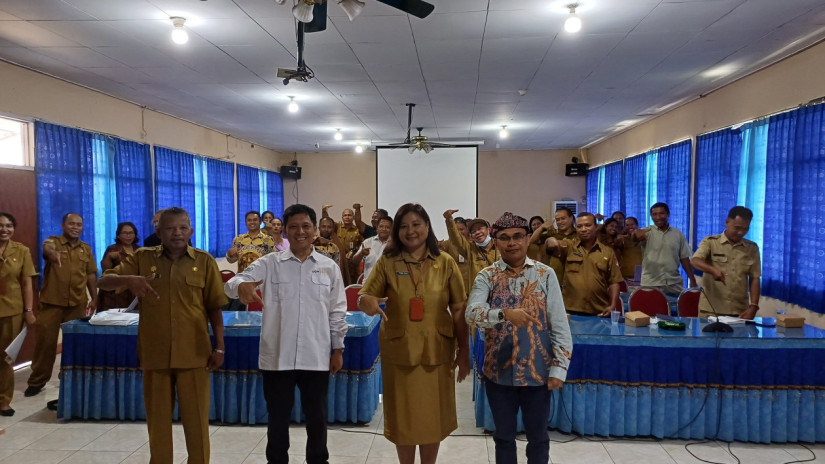
Significant changes have occurred in Sikka Regency’s development direction, especially in the tourism sector. Over the past ten years, these changes have been evident externally and internally.
Externally, Labuan Bajo’s designation as a super-priority tourism destination and massive tourism infrastructure development have altered tourist travel patterns. Initially, tourists traveled through Bali and then explored Sikka and its surroundings.
“Now, the travel pattern has changed to Bali-Labuan Bajo-Sikka,” said Margaretha Movaldes Da Maga Bapa, representing the Acting Regent of Sikka, at the Preliminary Seminar for the Review of the Regional Tourism Development Master Plan (Ripparda) Document for Sikka Regency on Wednesday (Apr. 30).
Internally, Margaretha Bapa acknowledged that the expansion of village areas and the emergence of new tourist attractions have also influenced tourism development.
The issuance of Ministry of Tourism Regulation No.10 of 2016 regarding the Guidelines for the Preparation of Provincial/Regency/City Tourism Development Master Plans (Ripparprov/Ripparkab/kota) and the latest planning regulations RPJMD and RTRW require Sikka Regency to review its Tourism Development Master Plan so that the Ripparda document must align with these three regulations.
“This review is also conducted to encourage synergy between sectors and regional apparatus organizations (OPD) to achieve optimal results,” she explained.
The Sikka Regency Government organized the seminar through the Planning, Research, and Development Agency (Bapelitbang) in collaboration with the UGM Center for Tourism Studies (Puspar UGM).
The seminar occurred in the Sikka Planning Office Hall and featured the Puspar UGM expert team, including Dr. Mohamad Yusuf, the Head of Puspar UGM; Wijaya; and Ika Rachmadani Kurniawan.
Around 35 participants from relevant OPD leaders, including Bapelitbang, the Tourism and Culture Office, village heads, academics, representatives of creative economy/MSMEs, and tourism practitioners, attended the event.
Dr. Yusuf stated that as an archipelago area on the island of Flores, the Sikka Regency holds a very strategic role and position in the economic and cultural development of the Flores region. One of the sectors expected to drive this development is tourism.
The various superior potentials possessed by Sikka Regency should be developed more optimally to become a pillar of economic development, especially in this region and generally in the Province of East Nusa Tenggara.
Tourism sector development is expected to align with the Sustainable Development Goals (SDGs), particularly in promoting economic growth (SDG no. 8), reducing poverty (SDG no. 1), implementing ecotourism practices to mitigate climate change threats (SDG no. 13), and fostering partnerships among stakeholders (SDG no. 17) to achieve strong tourism destination competitiveness in Sikka.
He believes a participatory approach to tourism development emphasizing sustainability should be the foundation of planning. Tourism development can only run optimally through collaborative work among stakeholders (multi-helix collaboration), including the government, academics, industry, community, media, and financial institutions.
“Therefore, this seminar also proposes the formation of a tourism communication forum consisting of the six elements mentioned above to optimize tourism development in Sikka Regency and strengthen synergy and commitment among tourism stakeholders,” Dr. Yusuf stated.
Wijaya, a Puspar UGM researcher, mentioned that Sikka Regency has a diverse range of tourist attractions, including natural, cultural, and man-made attractions. These include beaches, small islands, diving spots, volcanoes, waterfalls, mangrove forests, caves, ancient hills, forest trekking, culture, cuisine, and local crafts.
“Based on an initial study conducted by Puspar UGM, Sikka Regency has no less than 75 tourist attractions spread across 21 districts,” he noted.
Furthermore, he stated that tourism development in Sikka Regency is inseparable from two important surrounding areas: Kelimutu Ende as a National Strategic Tourism Area (KSPN) and the Super Priority Tourism Destination of Labuan Bajo, which is currently developing and receiving many visitors.
This strategic position is one of the destination’s strengths, and everyone hopes to benefit from the influx of tourists from these two premier destinations.
Author: Agung Nugroho


